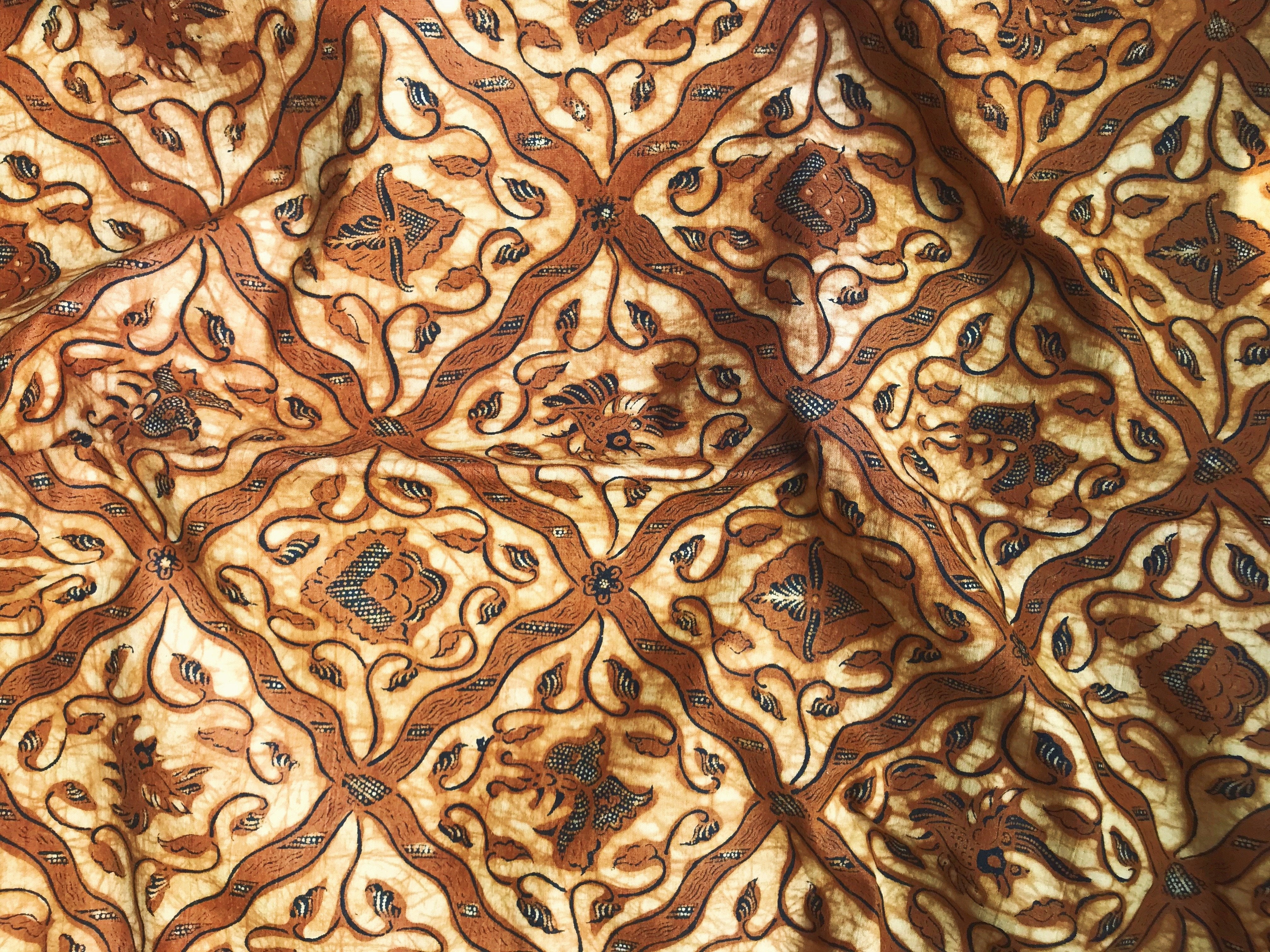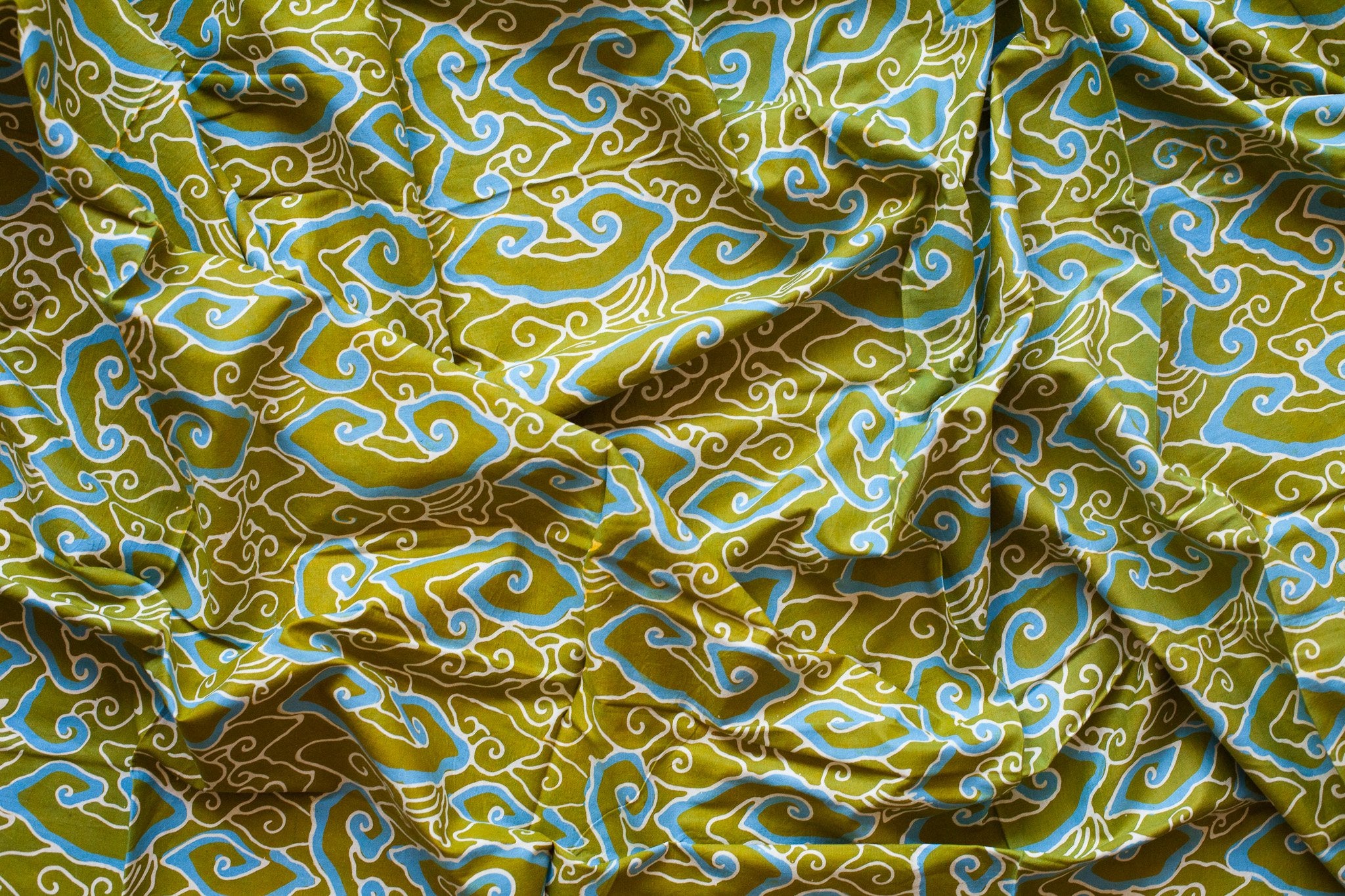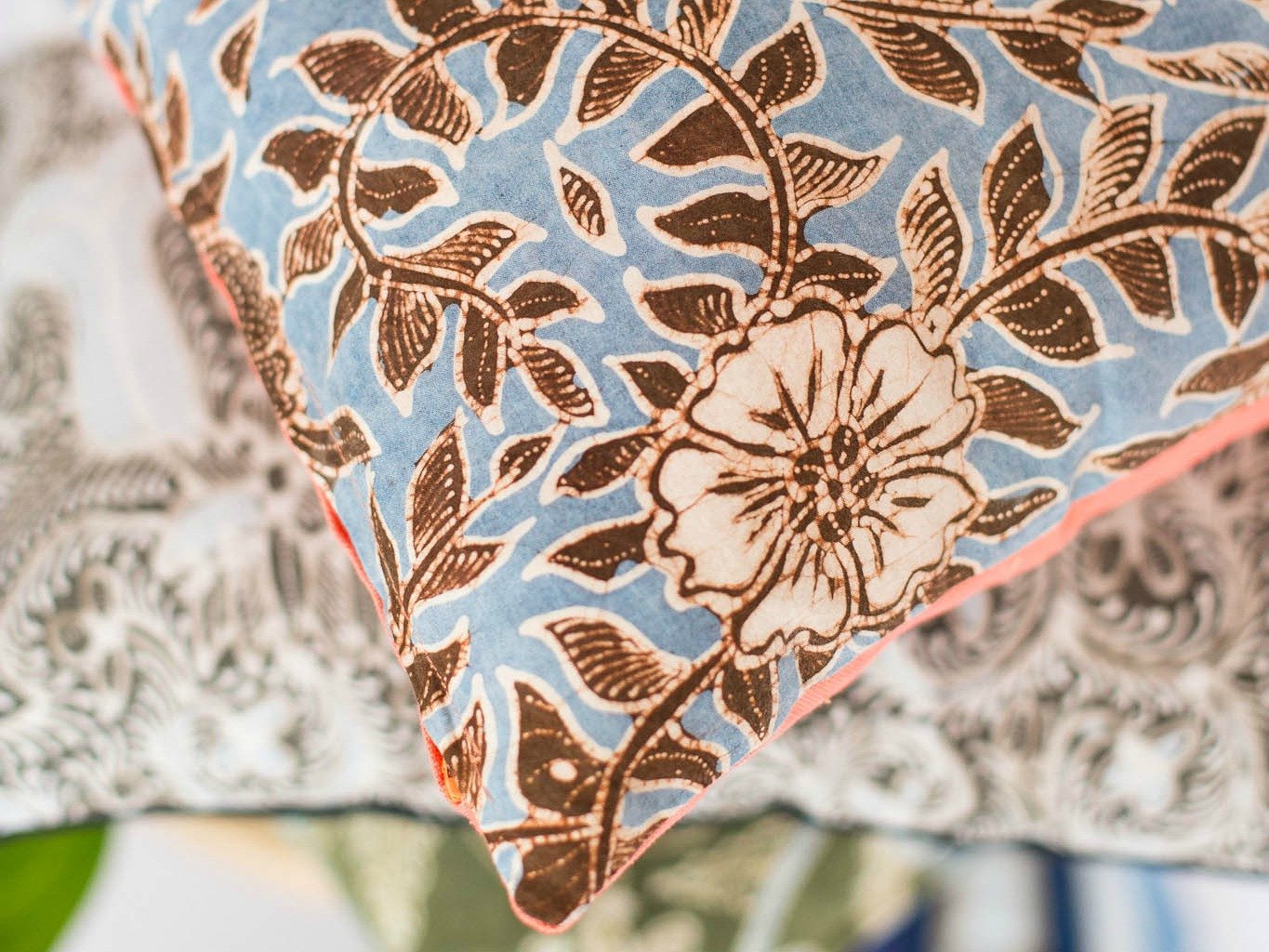Batik is a type of textile art that uses wax and dye to produce patterns on a piece of plain cloth. Though the word Batik may have been derived from the Malay word titik which means to dot, Batik can in fact be found across the world from Africa to Asia.
It was however, on the island of Java, Indonesia that Batik reached its pinnacle. These early designers incorporated deep meaning in their work, creating patterns closely related to the Javanese philosophies of life.
1. Parang

The parang motif appears in various forms, usually depicting a narrow length and almost sharp edge — just like a sword. In one famous folklore, the fabled prince of Java Prince Panja was saved by the protective power of the parang batik he had on him. In another story, the Sultan Agung of Mataram contemplated a stretch of jagged rocks on the south coast as a natural guard to the coastline. This has made the parang a symbol of security and safety.
2. Kawung
3. Sekar Jagad

4. Truntum
For centuries, the emotion of love has been central to man's existence. What are we without it? Legend has it that the truntum was created by the Queen, who upon the King's infidelity began batik-ing stars she saw in the dark sky to forget her loneliness.
Curious by this new motif, the King approached his wife with care, silently observing her diligence. Her earnestness eventually caused his love for her to blossom again.. making the truntum a symbol of budding or reawakened love.
In practice this the truntum is regularly worn by the parents of brides and grooms at Javanese wedding ceremonies.
5. Tambal


See how we translate these meaningful philosophies in our designs. Incorporating a textile's symbolism with integrity is central to what we do at Gypsied.
References and credits:
Djoemena, Nian S. Ungkapan Sehelai Batik. Indonesia: Penerbit Djambatan, 1986.
Kerlogue, Fiona. Batik: Design, Style & History. London: Thames & Hudson, 2014.
Batik Museum of Yogyakarta
Parang Batik by Karen Chen
Sekar Jagad and Tambal Batik by Mulberry San
Cover photo by Esther Jeohn
All text and other images are our own and subject to strict copyright and intellectual property regulations. They are not to be reproduced whether in whole or in part without permission.






Comments
Hi Juliet, we have dropped you an email!
Hallo my name is Juliet and I wonder if they are still making the Tambal batik, And where can I buy it ?
I hope to hear from you soon, thank you.
Kind regards,
Juliet
Hi Luther,
Thank you for adding to the conversation, it adds to the larger narrative of Batik in Indonesia and the region and I am very happy to hear your thoughts and understand more. Just a little background – I’m of Malay/Javanese descent which is how I arrived at the conclusion that tambal came from the Malay word tampal, which means to ‘paste’ or ‘put together’. Of course the Malay language is derived from the Sanskrit language too! :)
Every collection put together on Gypsied is a result of our travels to Indonesia. We meet with batik makers directly in Java so that we can listen to their stories and and would love to go back again very soon!
Dear,
You should come again now to Indonesia, particularly to Java, where the Batik commonly known came from (even there are any other tribes who has the Batik on different patterns.)
Please do update this, and “tambal” you need to recognise further whether it came from Malay or Sanskrit?
Javanese, is more to Sanskrit culture rather than Malay.
Thank you and hopefully, this may helpful.
Best regards,
Luter